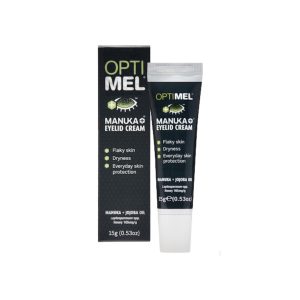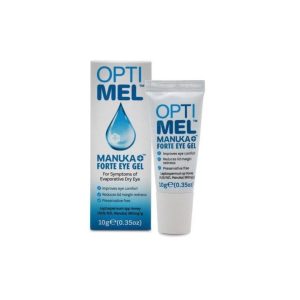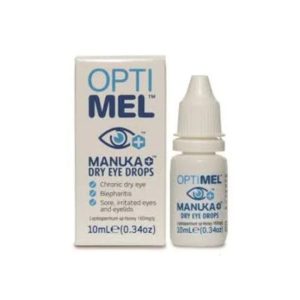Are persistent dryness, irritation, or discomfort in your eyes affecting your daily life? If you find that these symptoms are ongoing, you could be among many individuals suffering from chronic dry eye conditions linked to Demodex mites. These microscopic, eight-legged organisms are a natural component of the human skin biome, particularly around the delicate areas of the eyes and eyelids. However, when their populations grow excessively, they can trigger inflammation, exacerbating the symptoms of dry eye syndrome and causing significant discomfort and distress.
If you have been struggling with unexplained dry eye problems, it’s essential to investigate whether Demodex mites could be a critical factor contributing to your symptoms. In this detailed guide, we will assist you in recognizing the signs of a Demodex infestation, clarify the complex relationship between these mites and dry eye disease, and provide effective treatment options aimed at managing their population to bring you the relief you deserve.

Identify Key Symptoms of Demodex Blepharitis for Effective Treatment
Individuals suffering from Demodex Blepharitis or a significant presence of these mites frequently experience a variety of distinctive symptoms. Typical manifestations include:
- Burning, stinging, or gritty sensations in the eyes, particularly noticeable towards the end of the day.
- Unexplained excessive tearing or watery eyes not triggered by allergies.
- Red, inflamed eyelids accompanied by irritation of the skin surrounding the eyes.
- Crusty, dandruff-like buildup along the lashes and lid margins, often presenting as collarettes.
- Extreme sensitivity to light, resulting in a constant feeling of squinting.
- Fluctuating episodes of blurred vision throughout the day.
Many individuals endure these dry eye symptoms for years without realizing that a Demodex mite infestation could be a significant underlying cause. Recognizing these symptoms is a crucial step in effectively addressing the root issue and seeking appropriate treatment options.

Understanding the Connection Between Demodex Mites and Dry Eye Symptoms
Have you ever wondered how these minuscule creatures can incite such bothersome dry eye symptoms? Demodex mites feed on the oils and cells found on the skin, especially within the hair follicles of your eyelashes. As they consume these materials, they produce waste products, eggs, and remnants of dead mites, which accumulate along the eyelid margins. This buildup creates a substantial layer of debris and a bacterial biofilm that can obstruct the delicate oil glands essential for maintaining optimal eye health.
When these oil glands fail to release adequate oils, it leads to the rapid formation of dry patches on the eye surface. This oily tear film is crucial for preventing the quick evaporation of the watery tears that keep our eyes moist and comfortable. The inflammation caused by the blockage can further aggravate eye irritation, redness, and the uncomfortable gritty sensation typically associated with dry eye conditions.
Gain Insights into the Life Cycle of Demodex Mites for Effective Treatment
Understanding the life cycle of Demodex mites is essential for developing effective treatment strategies. These mites undergo distinct stages: egg, larva, nymph, and adult, over a life cycle that spans approximately 14 to 21 days. They are most active during the night, leaving their hair follicles to mate and lay new eggs on the skin’s surface.
This nocturnal behavior highlights that the best time to apply Demodex treatments is during the evening, just before bedtime. By targeting the mites when they are most active, you can significantly enhance the effectiveness of your treatment regimen. However, due to their rapid reproductive capabilities, any surviving mites can quickly repopulate, making continuous treatment necessary for several weeks or even months to achieve lasting results and relief from symptoms.
Implementing Effective Strategies to Manage Demodex-Related Dry Eye Issues
If your optometrist confirms a high count of Demodex mites through eyelash sampling or microscopic examination, they may suggest a range of treatment options to tackle the infestation:
1. Utilizing Tea Tree Oil Eyelid Wipes and Scrubs for Effective Relief
Products infused with tea tree oil possess potent antimicrobial and antiparasitic properties, making them particularly effective in eliminating mites. These specialized formulations can not only remove surface mites but also break down collarettes produced by these pests and help draw out hidden mites, making them more susceptible to treatment.
While tea tree oil is effective against mites, it may cause stinging upon application and could potentially be cytotoxic to healthy cells, possibly exacerbating symptoms for some patients. However, regular application of tea tree oil eyelid wipes or scrubs before bedtime can gradually diminish the mite population. A notable example of a powerful tea tree oil treatment is OcuSoft Oust Foam, which is especially effective for managing blepharitis primarily caused by Demodex mites.
2. Gentle Hypochlorous Acid Lid Hygiene Sprays for Safe Eye Care
Hypochlorous acid is a naturally occurring substance produced by our immune system and serves as an effective antimicrobial agent. It is gentle on the eyes, does not cause stinging, and is safe for our cells.
Disinfecting lid sprays and cleansing foams that include hypochlorous acid not only eliminate mites but also help to reduce inflammation and provide symptom relief. Applying these solutions to the lash lines before bedtime can effectively eradicate mites and their debris. Many of these products have a unique odor reminiscent of chlorinated pool water. Popular hypochlorous acid-based options include Ocusoft Hypochlor Spray and Avenova.
Among these, Ocusoft Hypochlor Foam is frequently recommended for its superior value and extended shelf life after opening, making it a practical choice for ongoing management and treatment.
3. Harnessing the Benefits of Manuka Honey for Eye Care Solutions
Recent research indicates that Manuka Honey solutions may be as effective as 50% tea tree oil against Demodex, although further studies are warranted to fully validate this. While it may cause a slight sting upon application, Manuka Honey is generally less irritating than tea tree oil and demonstrates excellent efficacy against other forms of blepharitis. It is non-cytotoxic and less likely to trigger inflammation in the eyelids.
Many patients report that any initial sting is worth it, as they often experience significant relief afterward. Manuka Honey solutions are available in gel form (such as Optimel Forte, which is more effective but may sting more) and as drops (like Optimel Drops, which are easier to apply and sting less).
4. Addressing Severe Demodex Infestations with Oral Anti-Parasitics
In instances where Demodex overpopulation is severe and persistent, healthcare providers may choose to prescribe oral antiparasitic medications. For instance, formulations such as Ivermectin in pill form have shown effectiveness in managing these infestations. Additionally, administering weekly doses of oral tea tree oil supplements over several months can help control mite levels and provide longer-lasting relief from the distressing symptoms associated with this condition.
5. Discovering Advanced Professional Treatments for Effective Demodex Management
Some eye clinics offer intensive in-office treatments specifically tailored for Demodex management, utilizing specialized products like Oust Demodex Cleanser Swabstix or a handheld electric device known as BlephEx.
The Oust Demodex Cleanser Swabstix offers targeted treatment options that can significantly reduce the impact of these bothersome mites, helping you regain comfort and improve your overall eye health.
The Article: Demodex Mites Linked to Chronic Dry Eye Issues first appeared on https://writebuff.com.
The Article Demodex Mites and Their Connection to Chronic Dry Eye Was Found On https://limitsofstrategy.com
The Article Demodex Mites: Link to Chronic Dry Eye Explained First Appeared ON
: https://ad4sc.com





I really appreciate this deep dive into the sometimes overlooked connection between Demodex mites and dry eye conditions. I’ve personally battled with chronic dryness and irritation for years, and it’s been a frustrating journey trying to pinpoint the root cause. I always assumed my symptoms were related to screen time or allergies, but I had no idea that these tiny mites lurking on our skin could be playing such a significant role in exacerbating my discomfort.
It’s really interesting to hear about your experience with dry eye symptoms. The journey to finding relief can feel pretty overwhelming, especially when the causes seem so scattered and elusive. Your assumption about screen time and allergies is quite common; many people are surprised to learn that there might be more to the story.
This post really resonates with me, as I’ve dealt with chronic dry eye symptoms for quite some time. The connection to Demodex mites is particularly intriguing. I had no idea these tiny organisms could be such a significant factor in my discomfort. It makes me think about how often we overlook the micro-level influences on our health, especially when they hide in plain sight, like on our skin.